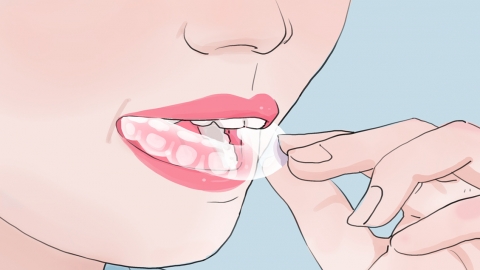What are the precautions for invisible orthodontic treatment?
Generally, there are several key points to note regarding the use of invisible orthodontic aligners, including wearing duration, oral hygiene, dietary restrictions, proper storage of the aligners, and timely replacement. The details are as follows:

1. Wearing Duration
The aligners should be worn for 20–22 hours daily. Invisible orthodontics works by continuously applying gentle corrective forces to the teeth through the aligners. Only with sufficient wearing time can teeth gradually move to their ideal positions according to the planned treatment. Insufficient wearing time may hinder the progress of tooth movement, prolong the treatment duration, or even compromise the overall orthodontic outcome.
2. Oral Hygiene
After eating, the aligners should be removed and both the teeth and aligners should be cleaned thoroughly. During orthodontic treatment, poor oral hygiene can lead to food debris accumulating on the tooth surfaces and aligners, promoting bacterial growth and potentially causing dental caries, gingivitis, periodontitis, and other oral diseases, which can negatively affect both the orthodontic process and overall oral health.
3. Dietary Restrictions
Avoid consuming excessively hard or sticky foods. Hard foods may deform or damage the aligners, preventing them from exerting precise corrective forces. Sticky foods tend to adhere to the aligners, making them difficult to clean and compromising the fit between the aligners and the teeth, thereby affecting force transmission and tooth movement.
4. Storage of Aligners
When not in use, properly store the aligners in their designated case. This helps prevent loss or deformation due to external pressure. Damaged aligners may impair their corrective function, possibly requiring replacement, which increases both treatment cost and duration.
5. Timely Replacement
Replace the aligners strictly according to the schedule provided by your dentist, typically every 1–2 weeks. Tooth movement is a progressive process that requires aligners with different designs at various stages to guide the teeth appropriately. Timely replacement ensures teeth move along the intended path and achieve the desired orthodontic results.
In daily life, consumption of high-sugar foods should be minimized, as a high-sugar diet increases the risk of dental caries, which can harm oral health and subsequently affect orthodontic treatment. Additionally, avoid不良 oral habits such as finger-sucking or chewing on one side only, as these may cause uneven pressure on the teeth and compromise the stability of tooth alignment.




